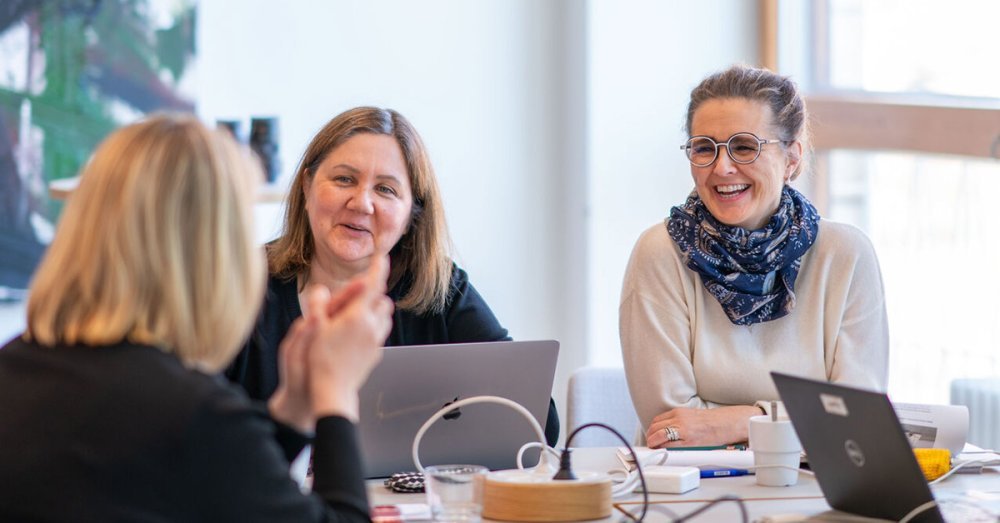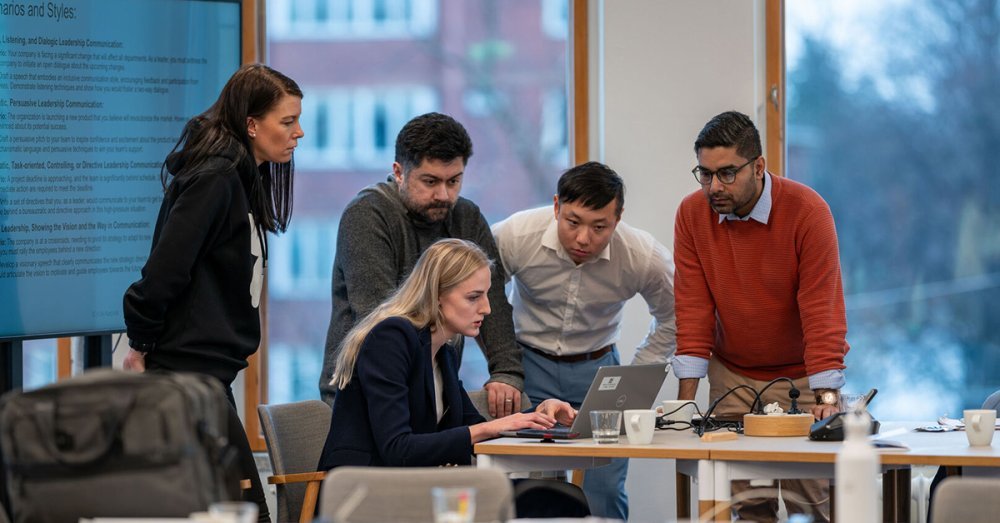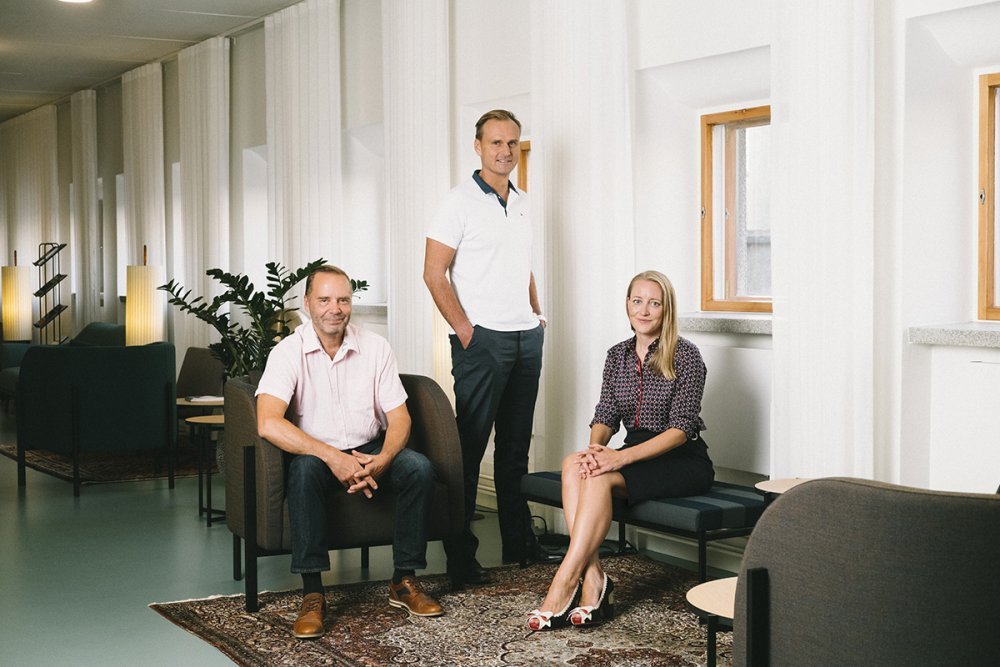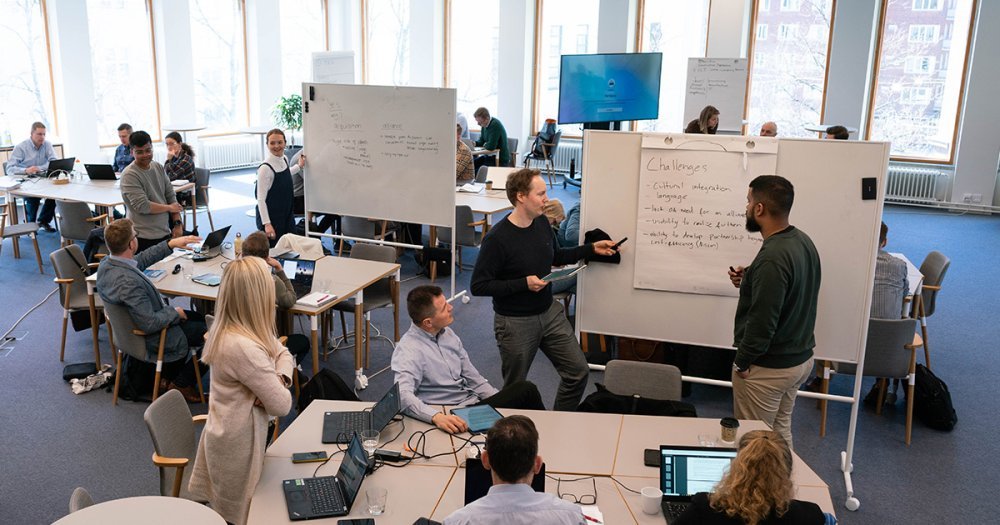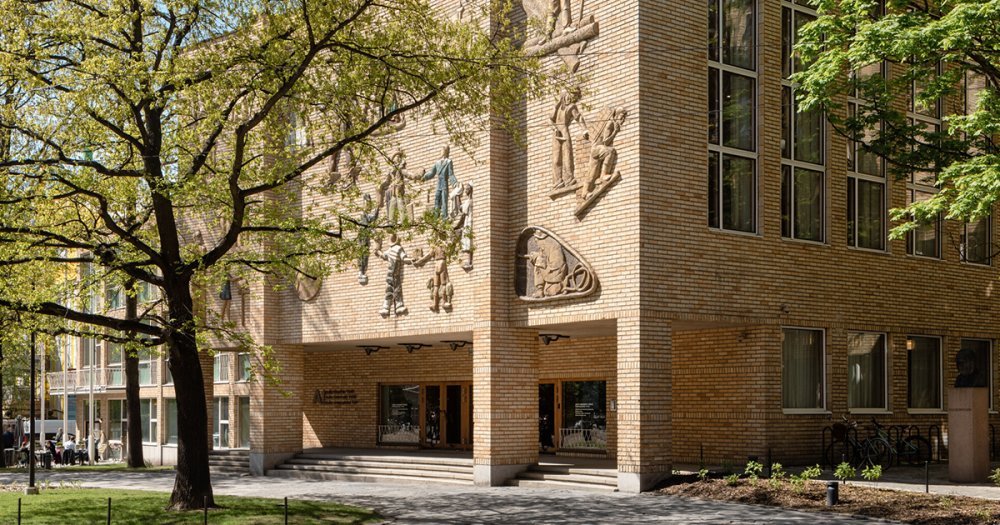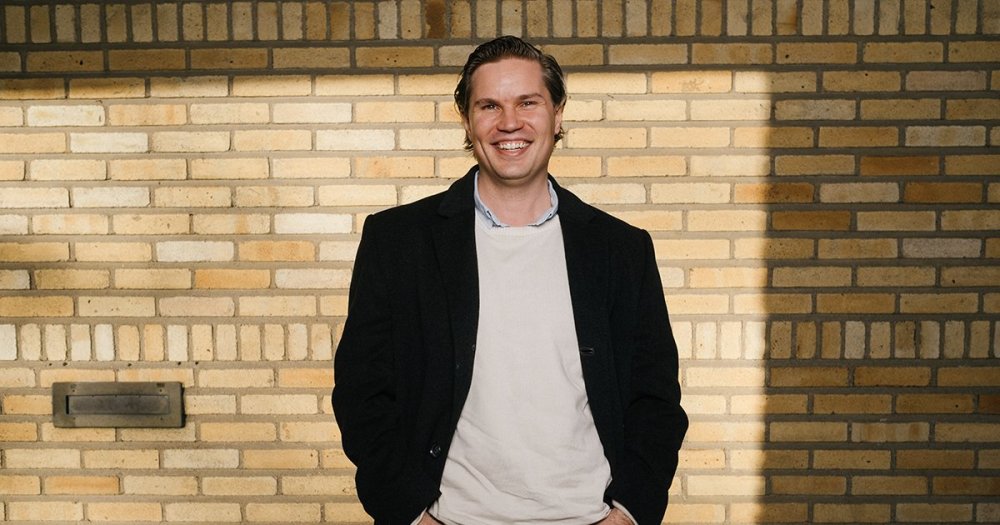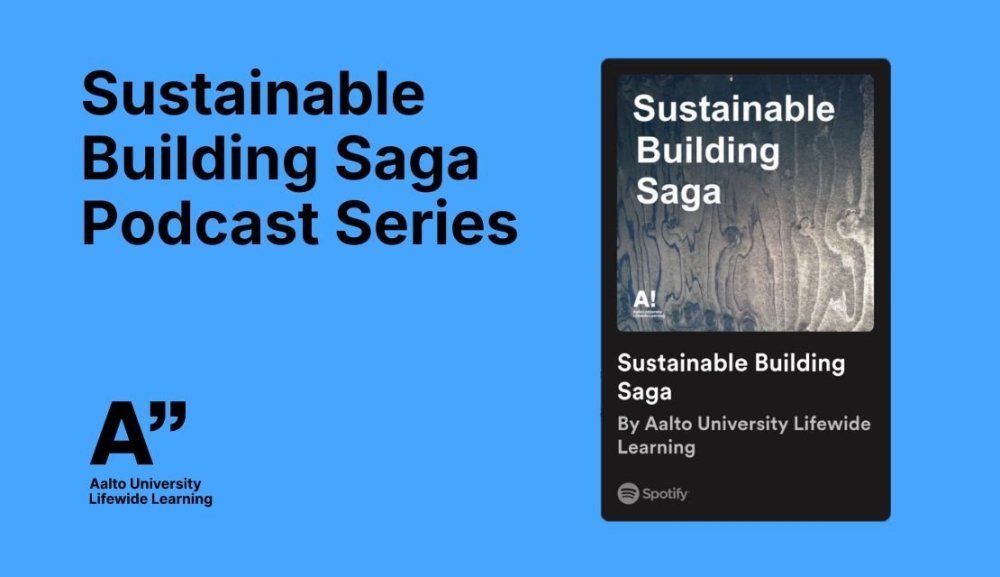Delivery mode
Online
Location
E-learning environment
Language
English
Scope
3-5 ECTS
Sustainability Toolbox for Building Designers
The built environment is responsible for nearly 40 % of global carbon emissions. Each building we design locks in these emissions for decades or even centuries. The carbon footprint of a building extends beyond its construction. It encompasses the entire lifecycle, including the carbon emissions from its operation, maintenance, and eventual deconstruction. If we continue building without considering the full building lifecycle, the carbon burden will grow, affecting not just our generation, but many to come.
Sustainability Toolbox for Building Designers training program equips you with the tools needed to analyze and reduce the carbon footprint throughout a building’s lifecycle. The program helps you lead the change towards carbon-neutral construction and navigate the changing regulatory requirements in the European Union.
This professional development program has been developed together with Aalto University’s Department of Architecture.
This program is part of the offering of the New European Bauhaus Academy.

Start
Fee:
Learning Outcomes
The program helps you develop basic skills on life cycle assessment (LCA), carbon footprint, and energy assessment.
After completing the course, you will
-
Understand the purpose and overall process of LCA for buildings and how buildings impact the environment
-
Understand the method of documenting the Bill of Quantities and its role in LCA.
-
Identify the factors that affect building energy consumption and energy simulation.
-
Be able to conduct LCA for buildings and understand the factors that influence the accuracy of LCA results.
-
Understand effective strategies to lower environmental impact of buildings.
-
Be able to conduct LCA for buildings and identify factors that affect the accuracy of LCA results.
-
Understand the implications of building LCA results and how to communicate the findings to your audience.
For
This program is designed for professionals working within the building sector. The skills and competencies developed throughout the studies are particularly relevant for
- architects
- structural engineers
- building designers
Contents and Schedule
The learning journey consists of self-directed online modules that are available regardless of time and place. During some of the modules, you will utilize LCA software to practice calculations. The course utilizes BIM tools, such as Autodesk Revit, ArchiCAD, and One Click LCA. Please note that while the One Click LCA license is provided to program participants, licenses for Autodesk Revit and ArchiCAD are not included in the program offering.
You can decide whether to complete the first three modules (3 ECTS) or all five (5 ECTS).
Modules
- The Global Carbon Challenge
- Understanding Carbon Flows in the Built Environment
- The Carbon Footprint in the Building Life Cycle
- Calculating the Carbon Footprint of a Building Using Life Cycle Assessment
- Reporting Life Cycle Assessment Results
- Mitigating Future Carbon Emissions from the Built Environment
- The Global Carbon Challenge
- Understanding Carbon Flows in the Built Environment
- Material Inventory for Life Cycle Assessment
- Using Building Information Modeling and Microsoft Excel for Life Cycle Assessment
- The Carbon Footprint in the Building Life Cycle
- Calculating the Carbon Footprint of a Building Using Life Cycle Assessment
- What Is a Carbon Handprint?
- How Time Affects Carbon Emissions from the Built Environment
- The Dynamic Between Operational and Embodied Emissions
- Methods to Minimize the Carbon Footprint of a Building
- Reporting Life Cycle Assessment Results
- Mitigating Future Carbon Emissions from the Built Environment
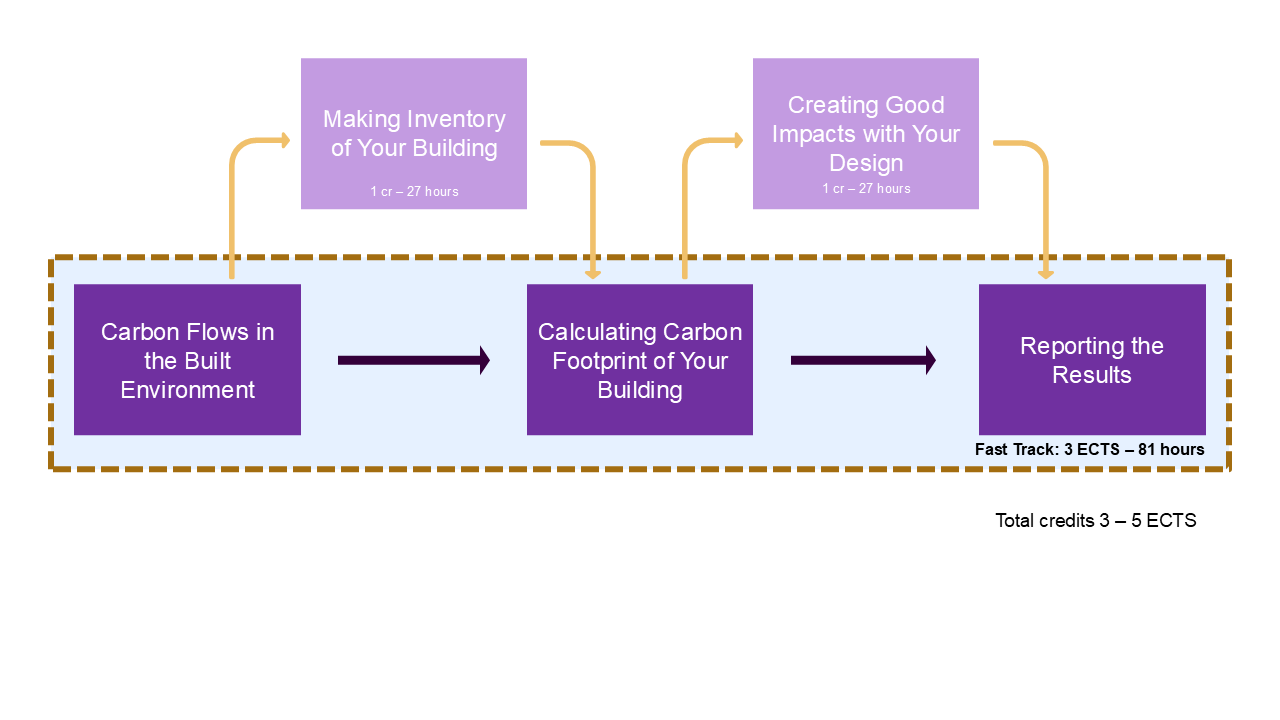
Instructors

Matti Kuittinen
Dr. Matti Kuittinen is an Associate Professor of Sustainable Construction at Aalto University´s Department of Architecture. His research is focused on climate impacts and circular economy in the built environment, as well as in the development of new building materials and methods.
During his work at the Ministry of the Environment of Finland, Kuittinen developed the national whole life carbon assessment method and initiated the Nordic Bauhaus programme. As an architect, he has designed experimental sustainable buildings and participated in humanitarian construction operations.

Laura Zubillaga
Laura Zubillaga is a Lecturer in Wood Architecture at Aalto University. She specializes in sustainable timber construction, prefabrication, and environmental impact assessment. Laura teaches courses on life cycle assessment of the built environment, as well as in the Wood Program, where she has led numerous experimental design-build projects.
Furthermore, she has a strong background in the wood industry, with expertise gained in both South America and Finland. Laura is currently pursuing her Ph.D., focusing on sustainability in wood architecture education.

Bergpob Viriyaroj
Bergpob Viriyaroj is a Doctoral Candidate in the Department of Architecture at Aalto University, specializing in Sustainable Architecture. His research encompasses low-carbon construction, bio-based construction, solar energy integration in buildings, and participatory design.
Currently, Bergpob is investigating the use of bio-based construction to reduce the carbon footprint of buildings in tropical climates. His study employs Life Cycle Assessment (LCA), Building Information Modeling (BIM), and energy simulation tools. Additionally, he is part of a team researching the integration of Photovoltaic (PV) systems into the built environment and enhancing the circularity of PV supply chains.
Beyond his research, Bergpob has seven years of experience in building design in Thailand.
Program Fee and Registration
The fee for the first three modules is € 500 (+ VAT).
The fee for all five modules is € 800 (+ VAT).
The course fee includes access to the course materials and a three-month license for the One Click LCA software. Please review the One Click LCA General Terms before purchasing and activating the license.
This program has adopted Aalto EE's new Customer ID, and it is delivered on Aalto Learning Experience Alex e-learning environment. Before ordering, please visit aaltoee.fi/customerid.
Program start
